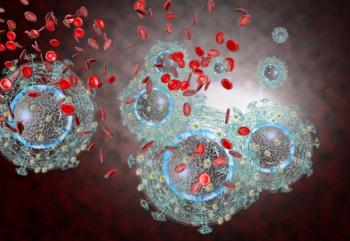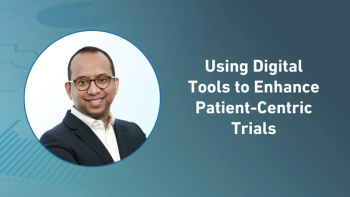
Cleaning up the Antibacterial Resistance Mess
Antimicrobial resistance presents a challenge on a global scale that has received attention from the United Nations General Assembly among other governing bodies. Research and development for new antimicrobials and alternative medicines is needed to combat such a threat.
September is proving to be a big month for tackling antimicrobial resistance, with, at the pinnacle, a full-day meeting dedicated to the subject in the high-profile context of the United Nations General Assembly in New York. This comes after AMR also received attention earlier in the month at the G20 summit in China and a G7 health ministers meeting in Japan. The G20 leaders affirmed the need to develop "evidence-based ways to prevent and mitigate resistance, and unlock research and development into new and existing antimicrobials." All this comes after a year of gathering concern expressed in forums as diverse as the World Economic Forum in Davos in January, in the UK government report published in May, and debates in the European Parliament. The UN meeting is a big deal. It is the first time that all 193 countries from around the world will sit down at head-of-government level with international officials, academics, civil society and the private sector to try to get a handle on the challenge of AMR. And a big deal meeting is appropriate, given the scale of the stakes – with apocalyptic predictions of mass fatalities emerging virtually every day from respected sources, with health ministers speaking openly of setting back health achievements by a hundred years if answers are not found, and with the WHO Director General warning of “the end of modern medicine”. The political declaration on the table at the UN meeting makes clear the consensus that resistance to antibiotics "is the greatest and most urgent global risk that requires increased attention and coherence at the international, regional, and national levels." And it points up the risks that AMR presents to "people most vulnerable to life-threatening serious infections, especially women giving birth, newborns, patients with certain chronic diseases, or those undergoing chemotherapy or surgery." Without a solution, "AMR is projected to cause millions of deaths worldwide with massive social, economic and global public health repercussions," it says. Mechanisms already exist for confronting the challenges. The UN text notes that "the blueprint for tackling AMR is the WHO Global Action Plan on Antimicrobial Resistance and its five overarching strategic objectives, developed by WHO". Within the 2030 Agenda for Sustainable Development there are commitments to address growing antimicrobial resistance and acknowledgements that AMR "challenges the sustainability and effectiveness of the public health response" to disease. And there is a role for the clinical trial community. As the UN text states, one of the keys to a solution lies in "sustained research and development for new antimicrobials and alternative medicines, rapid diagnostic tests, vaccines and other important technologies, interventions and therapies." It goes so far as to "underline that basic and applied innovative research and development, including in areas such as microbiology, epidemiology… is needed to better understand AMR and to support R&D of quality, safe, efficacious and affordable antimicrobial medicines, especially new antibiotics and alternative therapies, vaccines and diagnostics." It even takes the argument further, recognizing the hard economic facts underlying much of the penury of new medicines: a priority must be, it says, "resolving the lack of investment in R&D, including through the provision of incentives to innovate and improve public health outcomes, particularly in the field of antibiotics." The call is also being heard in Europe, where the EU has been running a programme to counter AMR since 2011 – although it is proving slow to report on what that actually achieved, and EU officials have been reticent about what the next steps might be, and when they might be taken. So much so that the European drug industry joined forces with European health campaigners to complain that the subject was completely ignored in the 'State of the Union' speech that the President of the European Commission delivered in early September. Plenty of concern. Plenty of mechanisms and agencies involved. But not so much action yet. And not just in Europe. Worldwide, the problem is broadly acknowledged but effective responses are not so evident. Partly this is due to the complexity and scope of the problem. The UN text blames "inappropriate use of antimicrobial medicines in human, animal, food, agriculture and aquaculture sectors." It also points to lack of access to health services, to diagnostics and to laboratory capacity. And it remarks on the risks from "residues of antimicrobials contaminating soil, crops and water." A solution depends on coherent action – but the evaluation of the problem varies as widely as the range of causal factors. Poorer countries are less keen to take radical action. As the UN text also recognises, "lack of access to health services and access to antimicrobial medicines in developing countries contributes to more deaths than AMR," and it easy to see therefore why AMR has yet to become a priority there. Widespread use of antibiotics in agriculture – particularly in China, but again also in many poorer countries – is not easy to counter. Even in Europe, attempts to tighten up on using antibiotics in animal feed and in veterinary practice runs into resistance in southern European countries. A first step was taken just ahead of the UN meeting when a dozen drug firms - both branded and generic – made a public commitment to get more energetically involved in the fight. They have promised to clean up their manufacturing processes by 2020, to back better information campaigns to doctors and patients, and to work on new business models that could ease access to vaccines and new antibiotics. It is only one step, but it is a step that offers some concrete action. Since the drug industry in general is at the root of the problem – in that it produces antibiotics, even if the problem comes from over-use and inappropriate use – it would be fitting for the drug industry to take a bigger role in pushing for solutions. Who is ready to join the self-declared dirty dozen of firms who have so far stepped up?
Newsletter
Stay current in clinical research with Applied Clinical Trials, providing expert insights, regulatory updates, and practical strategies for successful clinical trial design and execution.





.png)



.png)



.png)
.png)
